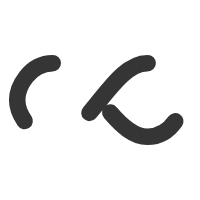

In the complex world of futures trading, technical analysis stands out as a fundamental tool for traders aiming to maximize their success. By interpreting market data and price movements, traders can make more informed decisions on entry and exit points, manage risks, and optimize their trading strategies. This article will delve into the application of technical analysis in futures trading, covering essential topics such as chart patterns, technical indicators, trend analysis, and support/resistance levels. Our goal at Vienna Trader is to equip you with actionable strategies that leverage these techniques to enhance your trading performance in the futures markets.
Fundamentals of Technical Analysis
What is Technical Analysis?
Technical analysis involves the statistical analysis of past market data, primarily price and volume. It uses charts and other tools to identify patterns and trends that can suggest future market behaviour. This approach is based on three key principles:
Importance in Futures Trading
In futures trading, where volatility is often high, technical analysis provides a framework to manage uncertainties. It allows traders to visually capture the market sentiment and make predictions based on systematic, charted data, unlike fundamental analysis, which can be more subjective and based on external data.
Types of Data and Charts
Chart Patterns and Their Significance
Key Chart Patterns
Application in Trading
Understanding these patterns helps predict future movements. For example, a trader might look for a head and shoulders pattern to signify a trend reversal. Recognizing these formations early can significantly enhance decision-making in entering or exiting positions.
Technical Indicators and How to Use Them
Overview of Common Indicators
Using Indicators to Optimize Trades
By combining these indicators, traders can refine their strategy. For example, using MACD to identify the trend direction while using RSI to pinpoint overbought or oversold areas can optimize entry and exit points.
Trend Analysis Techniques
Identifying Trends
The ability to identify and interpret trends is crucial in futures trading. Trend lines are simple yet powerful tools used to illustrate the direction and speed of price movements. Channels, or two parallel trend lines, can also help identify the range in which prices are expected to trade.
Strategies for Trend-Based Trading
Trading with the trend (trend following) involves buying in an uptrend when prices pull-back to a more favourable entry point or selling in a downtrend during a price rally. Counter-trend trading, while riskier, involves taking positions against the prevailing trend in anticipation of a reversal.
Understanding and Utilizing Support/Resistance Levels
Defining Support and Resistance
Support and resistance levels are like virtual barriers within markets. Support is the price level at which demand is thought to be strong enough to prevent the price from declining further, while resistance is on the opposite end: it prevents the price from rising higher.
Techniques for Trading These Levels
Identifying these levels can help traders find strategic entry and exit points. A break through resistance might indicate a potential buy signal, whereas a fall below a support level might signal a sell.
Strengths and Limitations of Technical Analysis
Effectiveness in Futures Trading
Technical analysis offers measurable, historical, data-based insights, making it a powerful tool in futures trading. However, its effectiveness can sometimes be diminished by market anomalies or external factors that cause sudden price swings.
Limitations to Consider
The main critique of technical analysis is its reliance on historical data, which may not always predict future movements accurately. Moreover, the subjective interpretation of data can lead to inconsistent results.
Conclusion
Technical analysis is essential to successful futures trading, providing traders with tools to analyze and predict market movements. While it has its limitations, its strengths make it an invaluable part of any trader’s toolkit. By continuously learning and adapting these techniques, traders can maintain a competitive edge in the fast-paced world of futures trading.
For cutting-edge analysis and tips delivered straight to your inbox. Join our community of savvy traders today and stay ahead of the market trends.
